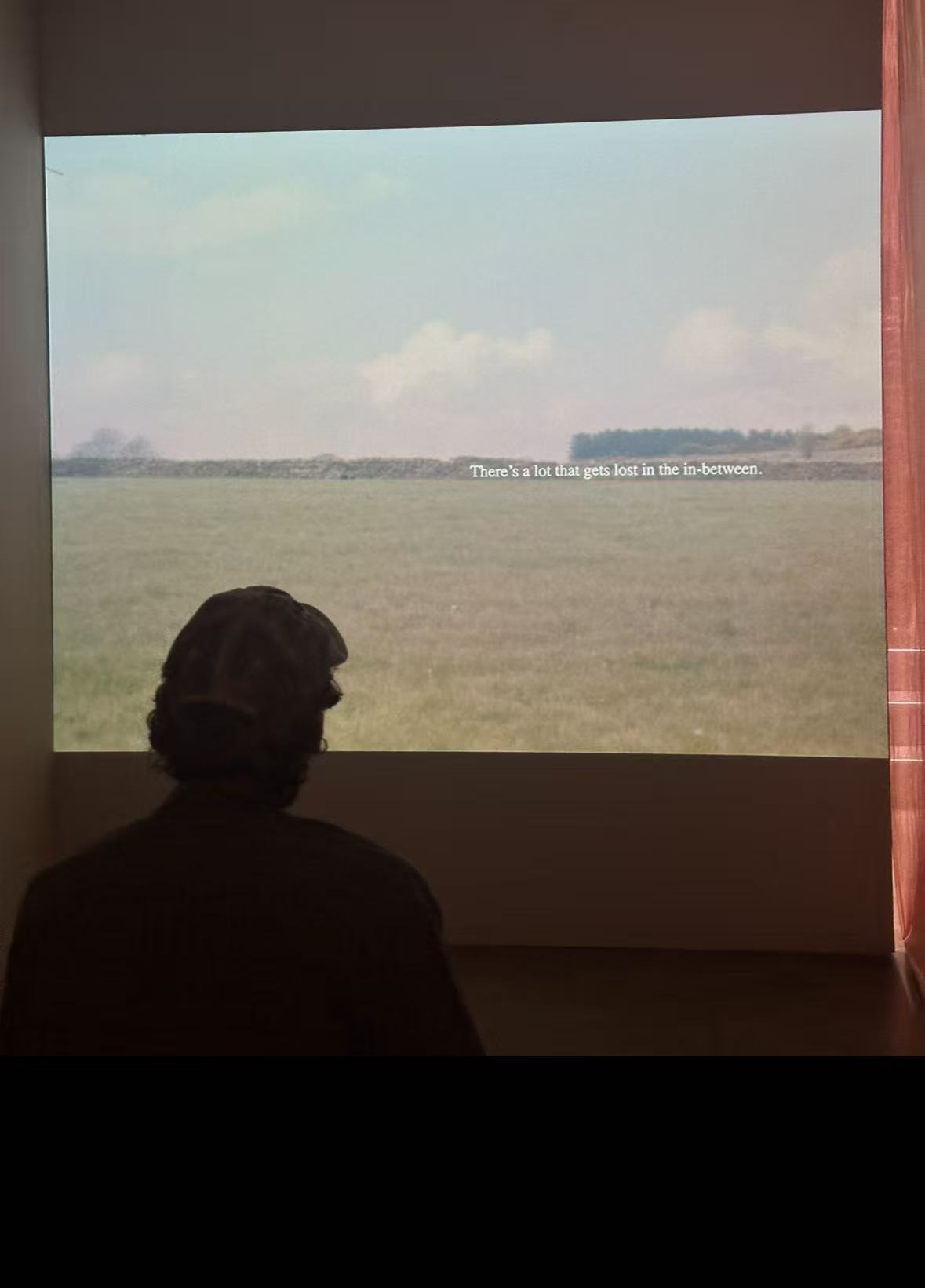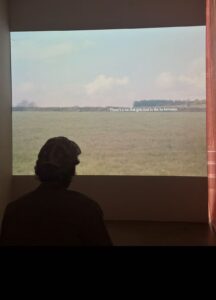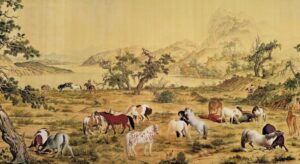A Mini Toolkit for Accessible Exhibitions

Reading Time: 3–5 minutes
This toolkit helps beginners understand exhibition accessibility through two practical tasks: writing alternative text and assessing visual clarity.
In exhibitions, accessibility means all visitors—including those with visual impairments—can access information. This toolkit offers simple ways to make visual culture more inclusive.
No physical tools needed just a pen or digital device to write.
Step 1 (2 minutes)
What is accessibility?
Think briefly:
Who might struggle to access visual information in exhibitions?
Step 2 (4 minutes)
Alt-text Writing Challenge
example

Image 0: Video Installation Scene
Photo © 2025 Wei Li. Used with permission.
Alt-text :
A person sits in a dim gallery room, watching a video projection of a green field with clouds. Text on the screen reads: “There’s a lot that gets lost in the in-between.”
Alt-text Writing Challenge
Write 1–3 sentences describing this image:

Image 1: A Young Girl Reading, c. 1770
Jean-Honoré Fragonard
National Gallery of Art, Washington
Public Domain / CC0
Alt-text :
Try again with image 2:

Image 2:One Hundred Horses (detail) — Lang Shining (Giuseppe Castiglione), Qing dynasty
Source: National Palace Museum, Taipei
Public Domain (CC0)
Alt-text :
Step 3 (2 minutes)
Example Answers:
Image 1:A woman reads by a sunlit window.
Image 2:Several horses stand and graze on an open grassland, surrounded by gentle hills in a calm natural scene.
Step 4 (3 minutes)
Visual Clarity Checklist
☐Am I assuming the reader can see?
☐ Did I add interpretation instead of description?
☐ Did I imagine things that are not visible?
☐ Did I leave out important visual details?
☐ Would a blind person be able to picture the image from this text?
Step 5 (2 minutes)
Reflection
Complete the prompt:
Now I believe accessibility in exhibitions means…
Step 6 (3 minutes)
Peer Feedback
Clarity :1 2 3 4 5
Ease of use:1 2 3 4 5
I learned something new :1 2 3 4 5
I liked… :
It was unclear when… :
I suggest… :
Image 1
Young Woman Reading — Jean-Honoré Fragonard, c. 1770
Source: Wikimedia Commons
Public Domain (CC0)
Image 2
One Hundred Horses (detail) — Lang Shining (Giuseppe Castiglione), Qing Dynasty
Source: National Palace Museum, Taipei
Public Domain
This Open Toolkit is licensed under:
CC BY-NC-SA 4.0 — Attribution, NonCommercial, ShareAlike
This Toolkit does not use AI-generated images.
All images are sourced from Public Domain or Creative Commons–licensed archives.


